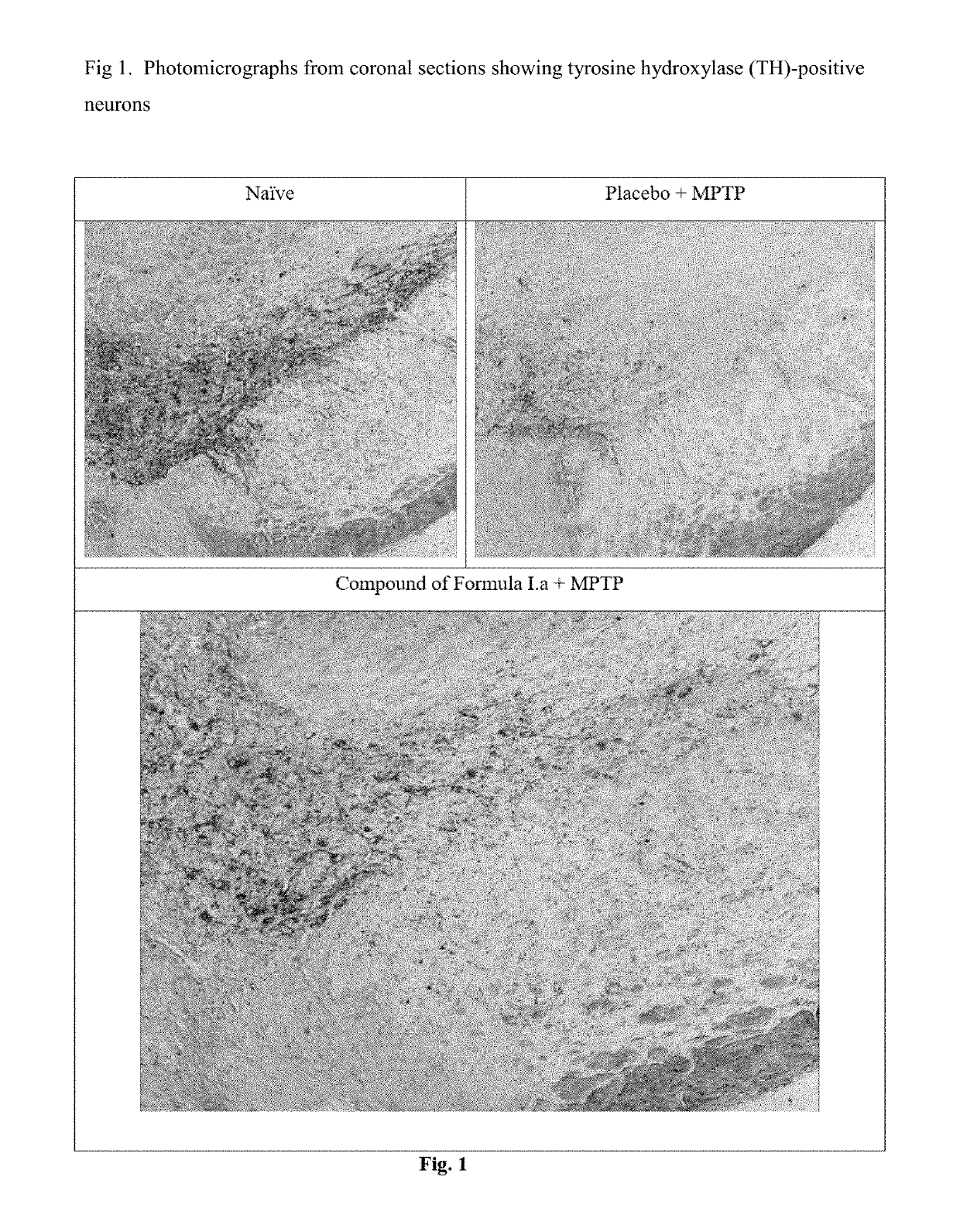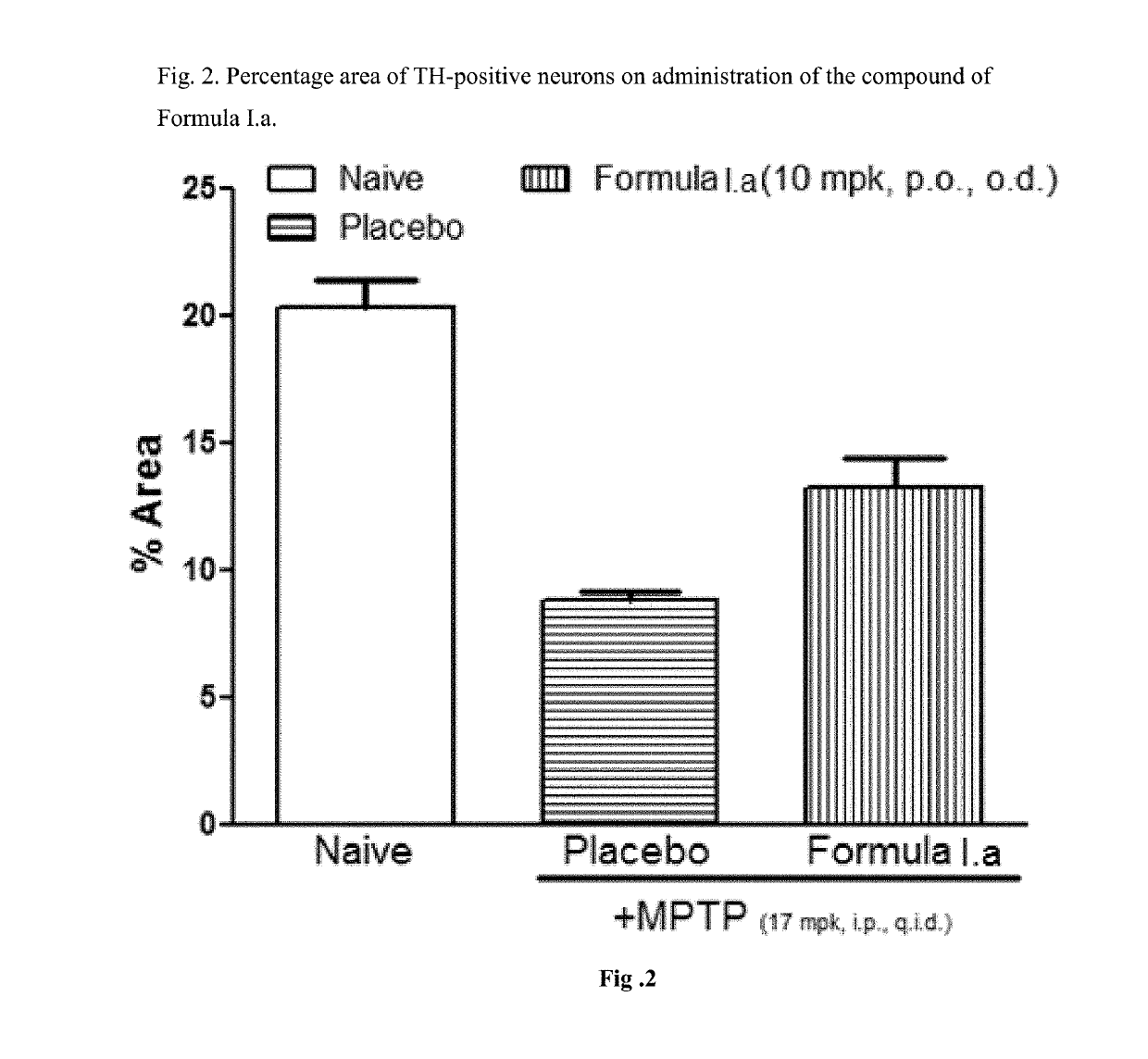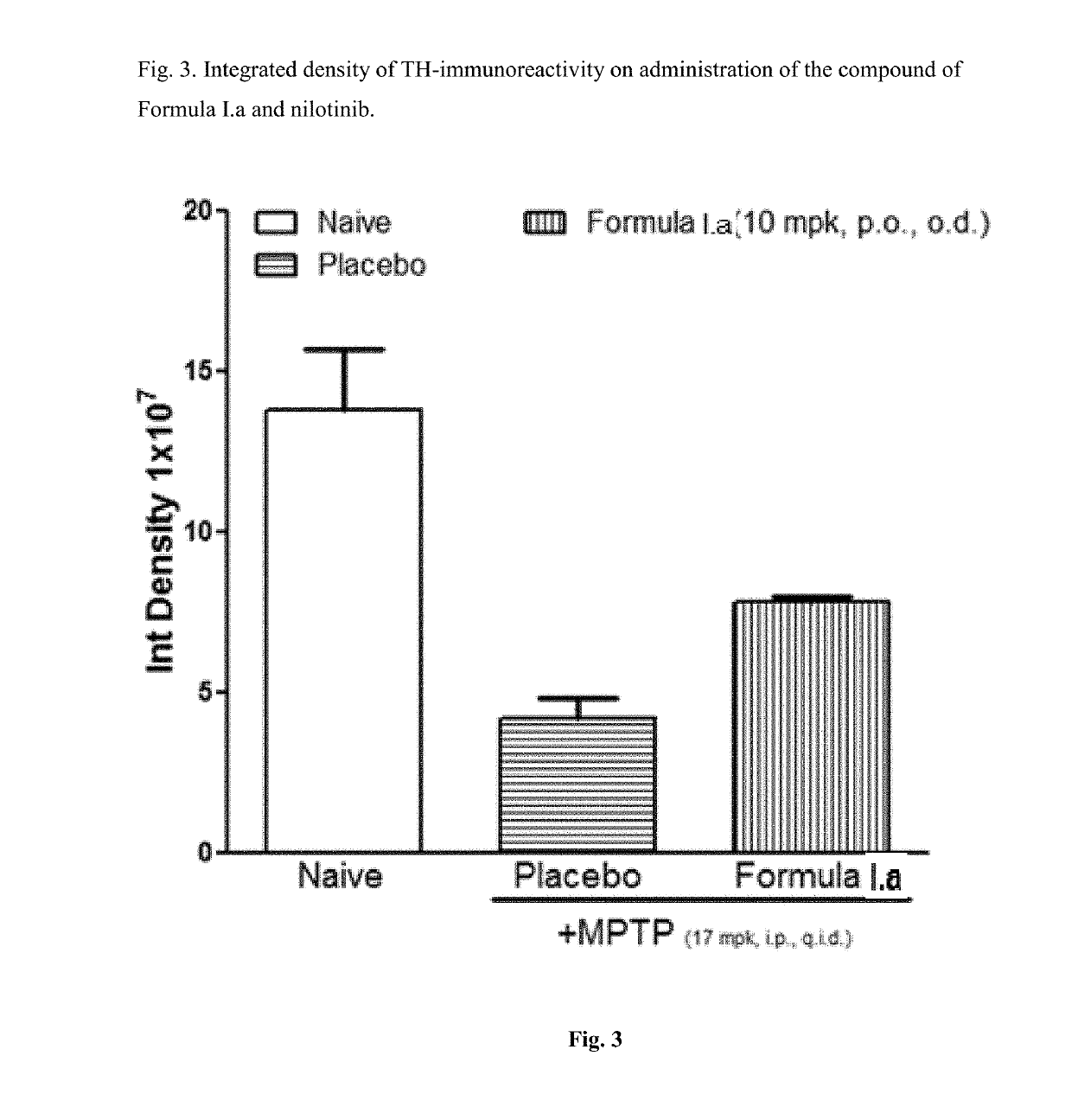Treatment of parkinson's disease
- Summary
- Abstract
- Description
- Claims
- Application Information
AI Technical Summary
Benefits of technology
Problems solved by technology
Method used
Image
Examples
example 1
[0034]In a final reaction volume of 25 μL, Abl (human) (5-10 mU) is incubated with 8 mM MOPS pH 7.0, 0.2 mM EDTA, 50 μM EAIYAAPFAKKK, 10 mM Mg(OAc)2 and [γ-33P-ATP] [specific activity approx. 500 cpm / pmol, concentration as required). The reaction is initiated by the addition of the MgATP mix. After incubation for 40 minutes at room temperature, the reaction is stopped by the addition of 5 μL of a 3% phosphoric acid solution. 10 μL of the reaction is then spotted onto a P30 filtermat and washed three times for 5 minutes in 75 mM phosphoric acid and once in methanol prior to drying and scintillation counting.
[0035]Results for the representative compounds of Formula I are provided in Table-2.
TABLE 2Comparative potencies of tyrosine kinase inhibitors in c-AblIC50 (nM)I.aI.bNilotinibPonatinibDasatinibImatinib0.90.6180.40.27190
example 2
[0036]Brain / Plasma Pharmacokinetic Studies
[0037]To determine whether the compound of Formula I.a crosses the blood-brain barrier, C57BL6 mice were administered orally at 30 mg / kg of the compound of Formula I.a, 100 mg / kg of nilotinib or 30 mg / kg of dasatinib. At 1, 4 & 8 hour time points post treatment, mice were anesthetized with isoflurane and a 0.4 mL of blood was withdrawn from retro-orbital plexus into eppendorf tubes containing 8 μL sodium heparin as an anticoagulant (100 IU / ml) and transferred to ice containers. Blood samples were centrifuged immediately for 7 min at 8500 rpm, 4° C. Plasma was separated in the pre-labeled eppendorf tubes and stored at −70° C. till further analysis. Immediately thereafter, the mice were sacrificed, whole brain was removed and rinsed with ice-cold phosphate buffered saline (PBS) to remove extraneous blood and blot-dried. Brain tissue samples were weighed and homogenized in 1:2 volume of PBS using a tissue homogenizer and stored in labeled vials...
example 3
[0039]Efficacy in Animal Model of Parkinson's Disease for Compound of Formula I.a
[0040]C57BL / 6 mice (6-8 weeks old, 25-30 g body weight) were administered orally with vehicle, the compounds of Formula I.a (10 or 30 mg / kg, once a day) for 7 days. On day 7, these animals received four intraperitoneal injections of a neurotoxin, 1-methyl-4-phenyl-1,2,3,6-tetrahydropyridine (MPTP-HCl; 17 mg / kg free base; Sigma) in saline at 2 hour intervals. Daily dosing with compound continued for 7 additional days after the last injection of MPTP. Briefly, the compound was administered 6 days prior to MPTP administration, on the day of MPTP administration and 7 days after MPTP administration. All animals were sacrificed 7 days after the MPTP administration and brain tissues were processed for immunohistochemistry evaluation. The standard avidin-biotin method (Benno et al., Brain Res., 1982; 246:225-236) was used for the immunohistochemical detection of tyrosine hydroxylase (TH). Initially, the brains ...
PUM
| Property | Measurement | Unit |
|---|---|---|
| Volume | aaaaa | aaaaa |
| Volume | aaaaa | aaaaa |
| Volume | aaaaa | aaaaa |
Abstract
Description
Claims
Application Information
 Login to View More
Login to View More - R&D
- Intellectual Property
- Life Sciences
- Materials
- Tech Scout
- Unparalleled Data Quality
- Higher Quality Content
- 60% Fewer Hallucinations
Browse by: Latest US Patents, China's latest patents, Technical Efficacy Thesaurus, Application Domain, Technology Topic, Popular Technical Reports.
© 2025 PatSnap. All rights reserved.Legal|Privacy policy|Modern Slavery Act Transparency Statement|Sitemap|About US| Contact US: help@patsnap.com



